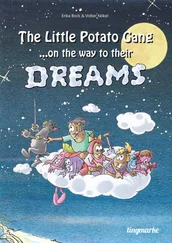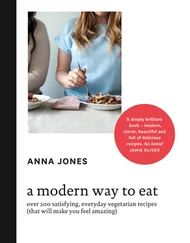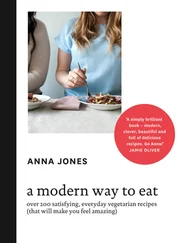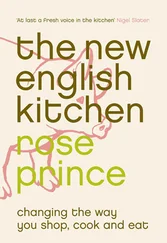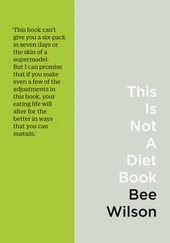It is said that Norman Borlaug, a plant agronomist who was awarded the Nobel Peace Prize in 1970, saved a billion lives from starvation with his invention of semi-dwarf, high-yield wheat varieties. Thanks to Borlaug’s miracle wheat – coupled with modern farming methods – yields of the crop nearly doubled in India and Pakistan from 1965 to 1970.
Many of us yearn for the good old days of food when it was normal to bake your own bread – or roll your own tortelloni, as the case may be; but no one would wish themselves back to a state of famine. We sometimes forget that for most of history, even in rich countries life expectancy was short and people were sometimes so deprived of food that they mixed tree bark into flour to make it go further. Even for those who did not suffer actual famine, the business of cooking and eating on an average family budget could lead to a pinched and frugal existence, especially in winter when – before refrigeration was available – meals centred on staple grains and salted meat with little that was green or crunchy, never mind spicy or particularly delicious. 5
Today, many of us have instant access to almost preposterous quantities of food, year round, of a freshness and variety our grandparents could not have imagined. In the city where I live, a three-minute walk from my home in any direction will take me to food shops with plentifully stocked shelves. I can stroll east and arrive at a Chinese supermarket, a butcher and a south Asian grocery which sells everything from fresh mint leaves and every spice under the sun to home-made falafels and samosas. To the north I will find a health food co-op offering local sourdoughs, ancient grains and organic apples; and a Hungarian deli selling any European cheese I can possibly name, as well as a few that I can’t. To the west and the south are four rival supermarkets, each heaving with fresh fruits and cereals, meat and fish, oils and vinegars, ginger and garlic.
Magical as it is, I’ve come to feel entitled to this abundance. On the rare occasions that I arrive at one of these many shops and the one specific thing I was expecting to buy has run out – no Parmesan left on a Sunday night! Outrageous! – I feel a mild consternation, because my expectation to eat exactly what I want at the precise moment I want to eat it has been scuppered.
In the developed world, many are living in a new Age of Delicious, liberated from the last vestiges of post-war austerity. The decline of hunger has been accompanied by a bright new dawn of flavour. Cooks are relearning the arts of pickling and fermenting, but this time we are doing it out of love not necessity. Never have so many cups of heavenly-tasting coffee been topped with so many variations on beautiful latte art. Clever home cooks have made food far more inventive and open than it was even ten years ago. Gone is the old food snobbery that said you couldn’t be a good cook if you hadn’t mastered half a dozen elaborate French sauces or a shellfish bisque. The internet has enabled recipe swapping on a scale and at a speed that is dizzying. Where our grandparents (in the Anglo-American world at any rate) sat down dutifully to plates of under-seasoned meat and two veg, we have developed unexpected new global palates: for spicy Turkish eggs sprinkled with sumac or vibrant salads of green mango and lime. Food has gone from being a scarce and often dull kind of fuel to an ever-present, flavoursome and often exotic experience, at least in big cities. Think how casually we eat ingredients such as Kalamata olives or couscous now, as if born to them.
Yet the omnipresence of food has created its own completely new difficulties. Widely available cheap food can look like a dream; or it can be a nightmare. It’s impossible to accept Norberg’s assertion that the problem of food has been solved when diet now causes so much death and disease in the world. The same food that has rescued us from hunger is also killing us.
As of 2006, for the first time the number of overweight and obese people in the world overtook the number who were underfed, in absolute terms. That year, 800 million individuals still did not have enough to eat but more than a billion were overweight or obese. To our hungry ancestors, having too much to eat might have looked like the gold at the end of the rainbow, but what these new calories are doing to our bodies is not a happy ending. 6
The problem isn’t just that some people are overfed and others are underfed, lacking enough basic calories to ward off gnawing hunger (though that remains a real and brutal problem). The new difficulty is that billions of people across the globe are simultaneously overfed and undernourished: rich in calories but poor in nutrients . Our new global diet is replete with sugar and refined carbohydrates yet lacking in crucial micronutrients such as iron and trace vitamins. Malnutrition is no longer just about hunger and stunting; it is also about obesity. The literal meaning of malnutrition is not hunger but bad feeding, which covers inadequate diets of many kinds. If governments have been slow in acting to tackle the ill health caused by modern diets, it may be because malnutrition does not look the way we expect it to.
Despite the decline in hunger, malnutrition in all its forms now affects one in three people on the planet. Plenty of countries – including China, Mexico, India, Egypt and South Africa – are suffering simultaneously from over-feeding and under-nutrition, with many people suffering from a surfeit of calories but a dearth of the crucial micronutrients and protein a body needs to stay healthy. As a result, not just in the West but across the world, people are suffering in growing numbers from diseases such as hypertension and stroke, type 2 diabetes and preventable forms of cancer. The lead cause of these diseases is what nutritionists call ‘suboptimal diet’ and what to the rest of us is simply ‘food’. 7
Our ancestors could not rely on there being enough food. Our own food fails us in different ways. We have markets heaving with bounty but too often, what is sold as ‘food’ fails in its basic task, which is to nourish us.
To walk into the average supermarket today is to be greeted not just by fresh whole ingredients, but by aisle upon aisle of salty oily snacks and frosted cereals, of ‘bread’ that has been neither proved nor fermented, of sweetened drinks of many hues and supposedly ‘healthy’ yoghurts that are more sugar than yoghurt. These huge changes to modern diets have gone hand in hand with other vast social transformations such as the spread of cars, electric food mixers and electronic screens of many kinds, which have left us far less active than earlier generations, gym membership or not. The mechanisation of farm work which created the food to feed billions also resulted in farmers (in common with most of the rest of us) leading increasingly sedentary lives.
In just a few decades, these alterations to how we eat have left unmistakable marks on human health. Take type 2 diabetes. The causes of this chronic condition, whose symptoms include fatigue, headaches and increased hunger and thirst, are still being debated by scientists, but there is clear evidence that – genetics aside – there is a higher risk of getting type 2 diabetes if you habitually consume a diet high in sugary drinks, refined carbohydrates and processed meats and low in wholegrains, vegetables and nuts.
In 2016, more than six hundred children in the UK were registered as living with type 2 diabetes. Yet as recently as 2000, not a single child in the country suffered from the condition. 8
So are we living in a food paradise or a food hell? It doesn’t seem possible to reconcile these competing stories about modern food. But in 2015, a group of scientists in the United States, the UK and Europe devised a systematic assessment of the world’s diet which showed that both stories are true: the world’s diet is getting better and worse at the same time.
Читать дальше


